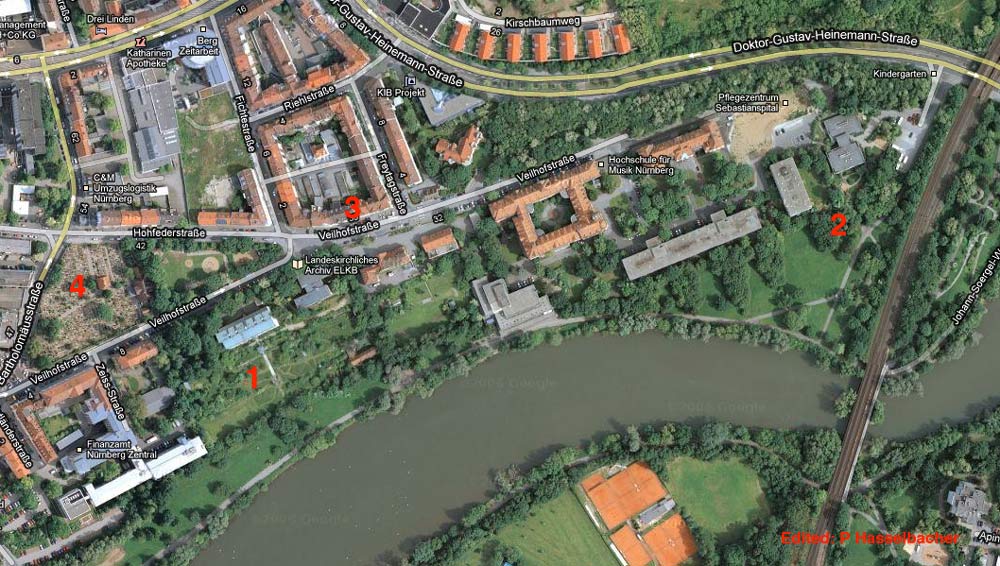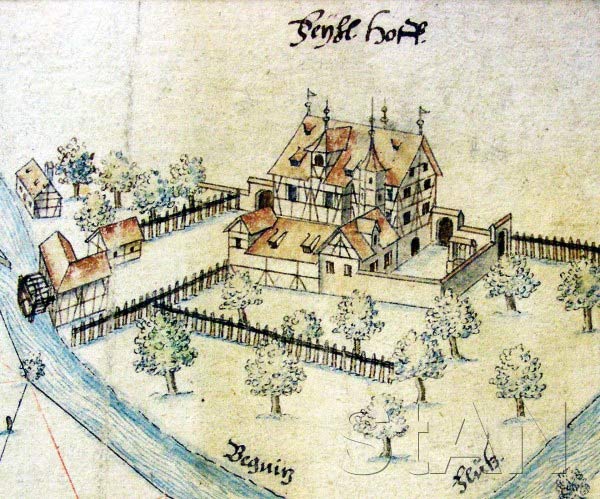How did these places get their name?
After his marriage in 1918, my grandfather lived on Vielhofstrasse in the Nürnberg suburb of Wöhrd. My father was born there in 1919. In those days, the street paralleled the course of the Pegnitz River and opened out into the broad meadows of the Würder Weise. I believe the house escaped the bombings of the second world war. Directly across the street today is a firehouse, and across the street to the West are the archives of the Lutheran Evangelical church, and a large house and garden on the historical property, Obervielhof. It is with this old manor house, and the old farm holding (Bauerngut) of Untervielhof just upstream that Vielhofstrasse shares its name. Vielhof means the Vielhouse. Viel is pronounced as the tool "file." Ober- and Unter- refer to upper and lower respectively and are common geographic appellations in Germany.

- 1. Obervielhof grounds and current manor.
- 2. Untervielhof.
- 3. House where Franz Xaver Hasselbacher born 1919.
- 4. Old Wöhrder Cemetery.
I was only able to find a little on the web. Obervielhof has been mentioned in records from the mid-1400s. The land and building have been put to a number of uses over the centuries including smelting metal, a place to live, an orphanage, to its present use as a seminary. It was destroyed and revised several times. Here is a drawing from 1630. Note the spelling of 'Feyhl Hof' and the Pegnitz Fluss. You can read more about the Veilhof at this link to the Altnürnberger Landschaft where I found the old drawing.

I do not know what the Viel- in Veilhof means. I can find no modern translation. I understand that in medial times it was spelled 'Feylhof' as in the drawing above, but that does not help me either. So, which came first, the street, a castle, or a farm. Was it a family name, or a farm or other place name? Some of these farm names are ancient, and their origins have been lost in the mists of time. That may be the case here, but this is another project that will be fun to keep on my list.
[Addendum March 2013: I extended my investigation of information about the old Veilhof and Veilhofstraße.]